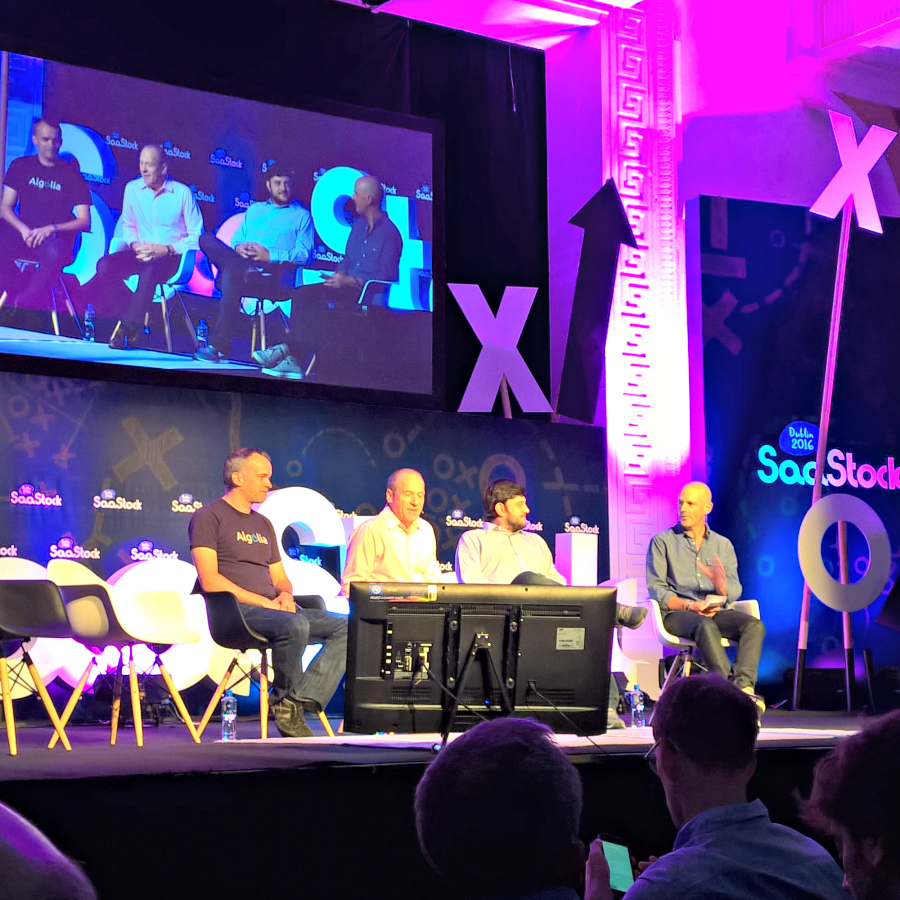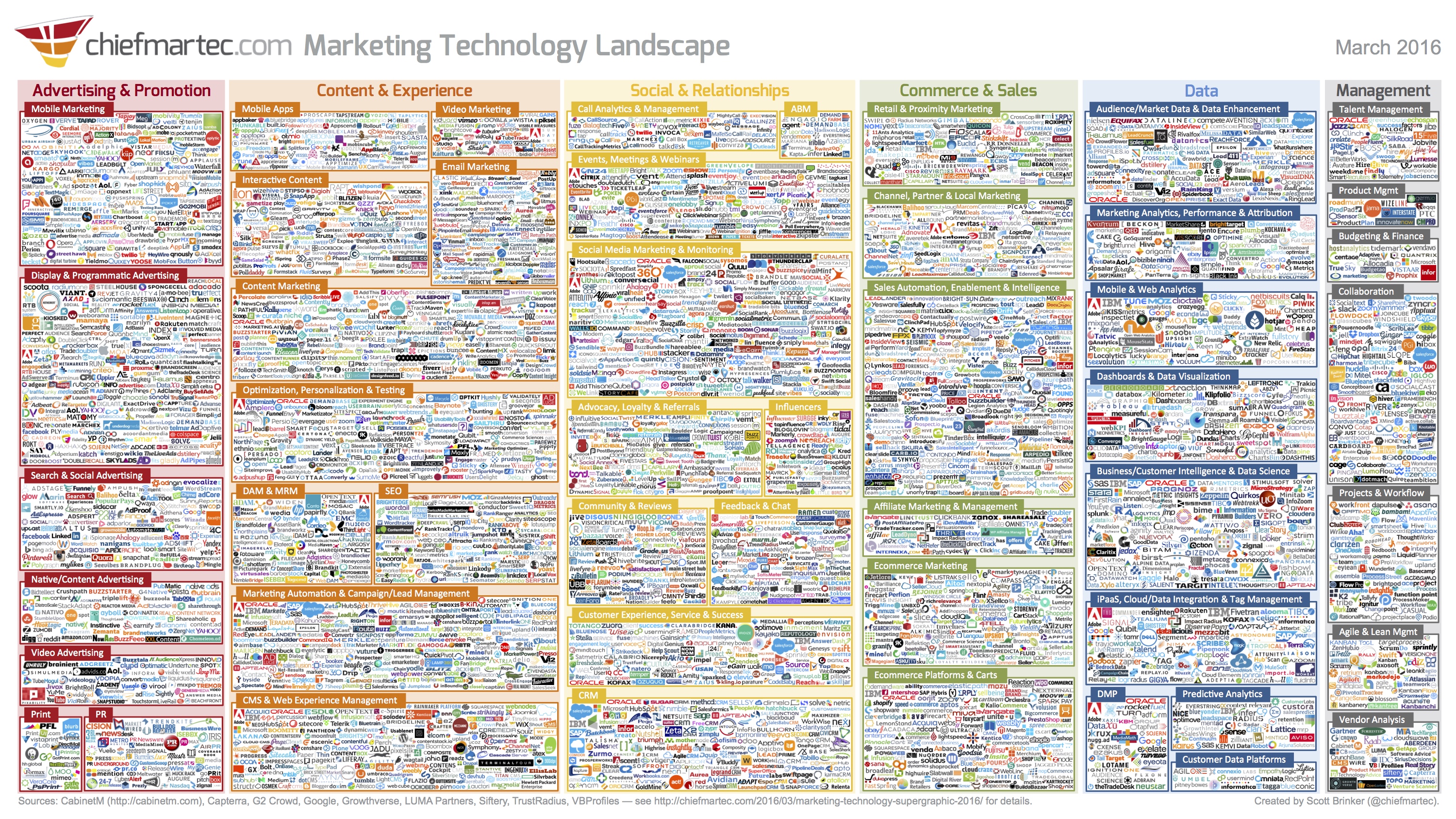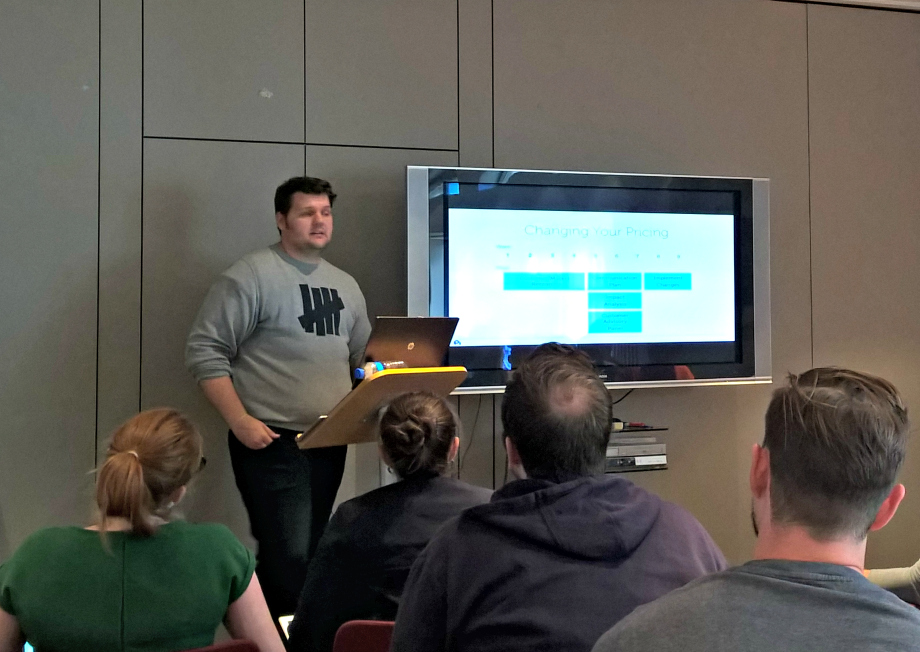It is four weeks after SaaStock16 in Dublin. With the necessary distance and reflection, I can only say that it was a high-quality event. Compliments to the SaaStock 16 team.
It was definitely time to have a dedicated SaaS event in Europe (see here). The sector is maturing and fast evolving in Europe. Thus, it is s a good sign of the development in the European SaaS arena that such an event finally could take place.
 But what are the most important lessons from the conference, besides meeting like-minded people working with an interesting business and delivery model?
But what are the most important lessons from the conference, besides meeting like-minded people working with an interesting business and delivery model?
Here are three great lessons I want to share with you:
Product market fit and the history of SaaS – is SaaS (still) innovative?
I must be fully honest. I would not have
expected to include this point in the key takeaway of a SaaS conference in 2016. My initial objection to include this point was quite simple: We frequently work with new products/services with our startup or corporate customers. We know product first and that product market fit is hard. Sometimes you just cannot get it right for many reasons also outside of your control.
As such it is part of the startup (or product development) journey and I took it for granted and the presentations as nice conference opener. But two things changed my view.
First I must say, I really enjoyed the talk and presentation by Des Traynor – Co-Founder of Intercom and Peter Reinhardt – Co-Founder of Segment about the "Product First Companies" including a lot of SaaS history and "Finding Product Market Fit".
They were entertaining and meaningful. In addition, I think they pointed out a substantial problem for SaaS startups (and not only) which is the second determinant of the change.
The fact that so many people I talked to (e.g. also Christopher Janz told me in an interview the presentation got him thinking about product market fit) and so many articles reviewing SaaStock highlighted these two presentations so prominently got me thinking why. And I think there is an answer:
The reason why the presentations resonated so much is not about product market fit itself. It is because they hinted at a current problem in the SaaS landscape on the metalevel, which makes a lot of sense with my current market observations.
Simply look on the picture here:
The map was compiled by Scott Brinker whom I quote directly "As mind-boggling as it is, the marketing technology landscape grew even bigger. I've fit 3,874 marketing technology solutions on to a single 16×9 slide — almost twice as many as last year." I think you see the point. And we talk about marketing technology SaaS solutions only.
The questions to discuss are therefore if SaaS solutions today are at large really process innovative (the core of new software) and where is their real differentiator to existing SaaS solutions and in certain cases On-Premise? This for the fact that these macrolevel structurs determin individual success.
Concerning process innovation, one can argue that the first generation of SaaS dealt more with the technology side and it was per se very valuable to bring an established process into the cloud. Yes, this is right.
But in 2016, with more and more SaaS players emerging overall and in each segment and ever more demanding customers the picture is changing.
In addition, I want to add one data point from the preparations of our SaaS biz seminar and based on our general innovation consultancy. SaaS adoption is still only around 20-30% in 2016, despite a claimed TOC reduction of up to 30%. Therefore, it is a legitimate question today, if one can interpret this number only as "potential for market growth". A detailed discussion of the mechanics of innovation is beyond the scope here, but I think this is why the presentations resonated so much.
Thus I think here are still a lot of issues to solve on the business side in oder to build the scaling, unicorn SaaS solution.
Closing the first point, I share some more observations about SaaS history: besides the above-mentioned speakers also Fergus Gloster, first keynote speaker in the SaaS boot camp, took the route of introducing the development of SaaS and its origins. This was a confirmation for me (and the approach in the SaaS business model seminar) that it is still very important to provide the context of SaaS solutions and the journey from On-Premise over ASP to today's SaaS to understand the business model and its demands. As he said: it is about service, not software. Exclamation mark and nice round up for this first point.
Building great companies counts – not deploying the SaaS business model or employing the right metrics
The second key take away comes from the last VC panel on the agenda.
One sentence on the stage got my attention: "European founders think about the business model, but keep the focus too much on metrics. (...) This is not enough because in the end what you want to invest and see as an investor are (SaaS) companies that are actually disrupting a market." (It is not a fully literal quote, but I think it comes very close).
This statement makes perfect sense when you link it with the first point here. I will add an experience to illustrate the point. Many discussions I have in Germany about SaaS focus around KPIs and how to measure them. Of course, it is important, but this exclusive focus has two downsides.
The first one is obvious. In several cases one hour more on the customer problem to solve and differentiation beyond UI would be much better spent than on metrics – even if they might look good.
The second one is the presumed precision of these metrics and gained control given that European SaaS companies are often young. As such data points for metrics are often work in progress. Think about your CAC in the first 12 -16 month and what founders tend to forget to include. CAC will change scaling, but can your pricing?
A side note on this panel: I was surprised to see so few founders in the room, as I would have expected all the cash starving startup founders to be in front seat. Take it as a sign about funding needs or simply as an indicator of information overflow at that time of the day.
Pricing trumps sales, but everybody focuses on new customer acquisition
 The third highlight and key takeaway came from the insightful presentation by Patrick Campbell from priceintelligently. His presentation was a highlight for two reasons: the content and because I think his presentation and the learning from it are the connectors between point A and point B on this list here.
The third highlight and key takeaway came from the insightful presentation by Patrick Campbell from priceintelligently. His presentation was a highlight for two reasons: the content and because I think his presentation and the learning from it are the connectors between point A and point B on this list here.
His basic statement was quite simple: Too many SaaS founders focus on customer acquisition, but totally forget about pricing and retention. Some participants I discussed with weighted down the point arguing that it was a sure bet that pricing is featured that prominently in the presentation as priceintelligently bases its service around it. But even then, he nailed the point and I think the insights go far beyond the importance of pricing.
First it is quite interesting to see how less attention is actually paid to pricing being the key signal function about value.
Then, the presentation neatly gave a data layer to an issue I've been discussing (and writing about) with clients. I think there is evidence to argue that customer acquisition costs are at the moment exaggerated or inflated. My argument gained weight by the slides showing that the number of competitors per SaaS solution both in horizontal and vertical SaaS field is constantly increasing driving up CAC while price is flat. I'm even tempted to go one step further, and to say maybe we should think hard about software still being a key differentiator or competitive advantage. But this is an argument for another blog post.
One last point from the presentation was albeit a well-known fact the divergence between what you think you do as a SaaS company and what you really do e.g. with running experiments.
Bonus: SaaS Talent, talent, talent – short in Europe
Finally, a bonus takeaway which was about talent.
The point about talent is not only about hiring the right person, as the others wrote and I fully agree. My point is more that in Europe we are still in the trial and error phase as I understand it meaning there is no established talent pool. Thus prior to hiring the right person, the question is where to find and how to qualify new talent in the field. That is something we very often hear as problem in Germany and we are working on.
Some words about sentiment in general
Besides my pick of takeaways, a lot of other participants' sentiment was around the sales focus. A lot of founders I talked to considered some of the presentations too sales centric and wondered if this is the only thing. Then the topic of customer success was topic of many presentations.
With regards to customer success (which is an emerging role in European SaaS) I found the differences in the prevalent view on such a function among people I talked to was interesting.
It ranged from "a must have, cornerstone of the SaaS business" to a "typically American second sales role" giving precedence to a more traditional key account for customer relationships.
So quite many opinions in the room. And I should not forget to mention that almost everybody was quite content with the event and we had a lot of fun, too.
Conclusion:
In summary SaaStock16 was a SaaS event worth spending the time (and money). The agenda reflected many issues in European SaaS and it was very important to kick off an industry gathering like this.
Still, it is not only paddling and fun in the European SaaS community as we are not in 2008 (when Bessemer SaaS laws where published), but in 2016 with increasing demands from customers, cultural differences in software purchasing and all the usual issues we know about European SaaS. See you hopefully in 2017.
I add and link several other articles here that review SaaStock16 or summarize the key learning:
https://medium.com/@episode1/saastock-2016-takeaways-5028ebcee28d#.swb1f1uir
https://bartoszjakubowski.com/some-saas-learnings-from-saastock-2016-d2dca111b55a#.r1ob3anrw
https://medium.com/@alangleeson/10-b2b-saas-lessons-from-saastock-2016-adba87654602#.fwa3nqeed
 But what are the most important lessons from the conference, besides meeting like-minded people working with an interesting business and delivery model?
But what are the most important lessons from the conference, besides meeting like-minded people working with an interesting business and delivery model?


 The third highlight and key takeaway came from the insightful presentation by Patrick Campbell from priceintelligently. His presentation was a highlight for two reasons: the content and because I think his presentation and the learning from it are the connectors between point A and point B on this list here.
The third highlight and key takeaway came from the insightful presentation by Patrick Campbell from priceintelligently. His presentation was a highlight for two reasons: the content and because I think his presentation and the learning from it are the connectors between point A and point B on this list here.
Schreibe einen Kommentar
Achten Sie darauf, die erforderlichen Informationen einzugeben (mit Stern * gekennzeichnet).
HTML-Code ist nicht erlaubt.